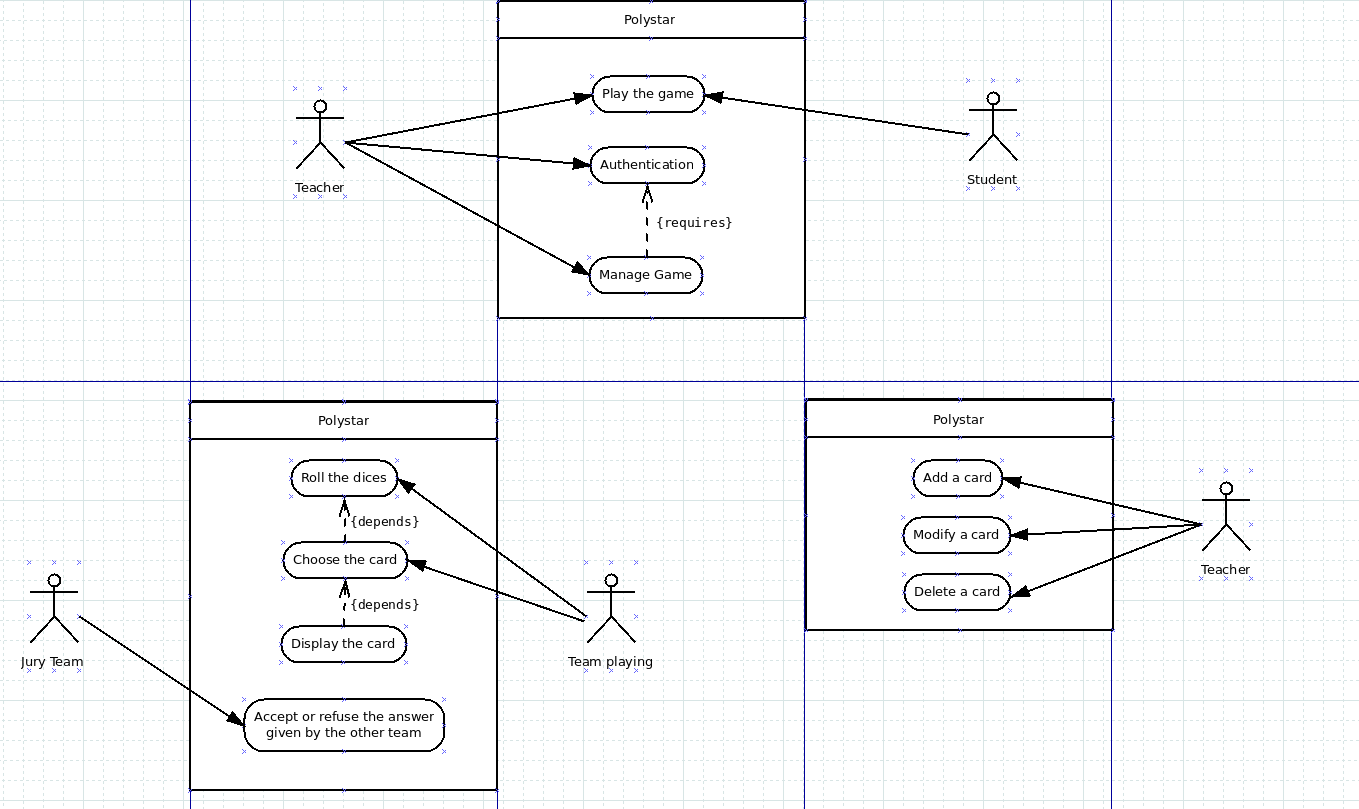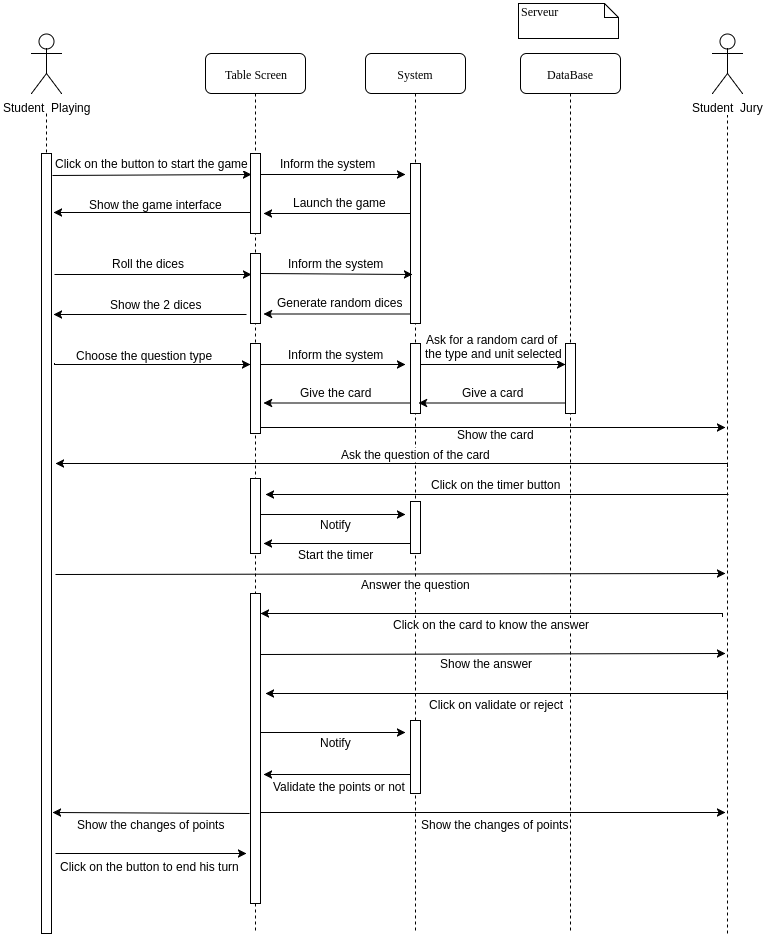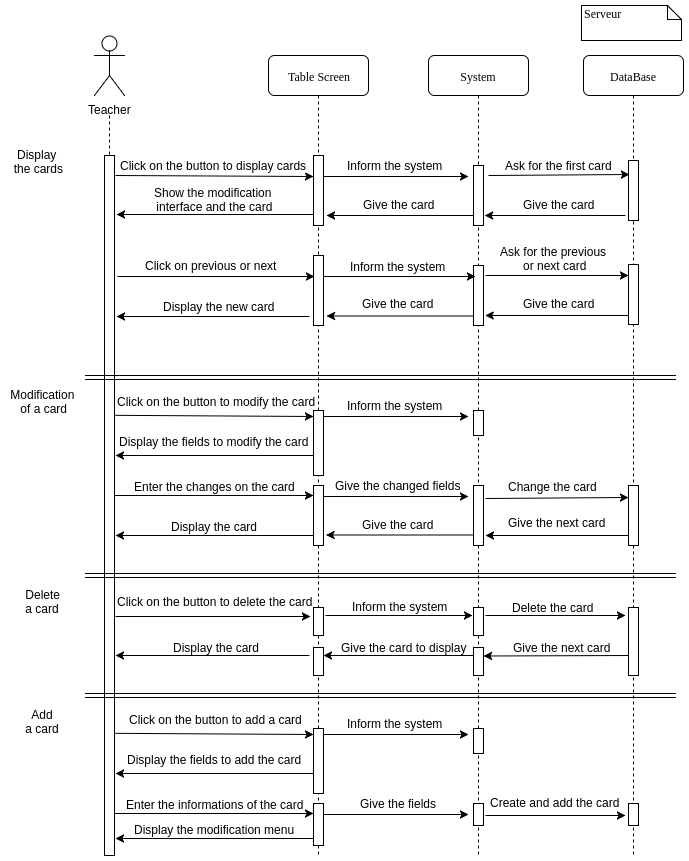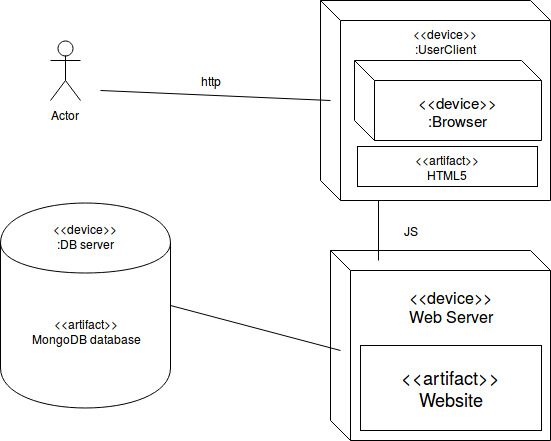RICM4 2017 2018 - SeriousGame Polystar /UML
Use case
Case n ° 1
Use case: Play a game
Description: Players play a game and the teacher supervises the game
Actor: Players and Teacher
Stakeholders and their interests:
- Players, goal: win the game
- Teacher, goal: supervise the game
Pre-conditions: Enough players are gathered to play and throw the game
Nominal scenario:
- The system displays the menu
- Players select the type of game (unit and language)
- The system displays the game page
- Players play the game
- Players finish the game
Alternative scenarios: - Players leave the game early
End: scenarios d or e according to user's decision
Case n ° 2
Use case: Edit game
Description: The Teacher modifies the game by deleting / adding / modifying cards
Actor: Teacher
Stakeholders and their interests: - Teacher, goal: modify the game
Pre-conditions: Authentication with a password
Nominal scenario:
- The system displays the menu
- Teacher selects "modify"
- The system displays the authentication system
- The Teacher identifies himself
- The system displays modification options
- The teacher modifies the game
- The system requests confirmation of the change
- The modification is taken into account by the system
Alternative scenarios:
- Teacher does not identify himself
- The Teacher exits the edit screen
- Teacher does not validate changes
End: scenarios c, e, g or h according to the user's decisions
UML Diagram
Sequence Diagram
The sequence diagram bellow depicts the first turn of the game.
The following sequence diagram depicts the different ways to modifiy the collection of cards.
Deployment diagram :



